This week we look at a small sap-feeding insect with a high economic threshold, and how counting a few beneficial insects helps make informed economical management decisions.
Soybean aphid (Aphis glycines) was first found in North America in 2000. They are specific, feeding and functioning as a potential pest of ONLY soybeans (Fig. 1). Like some other aphids, soybean aphids overwinter on an alternate plant host completely different from their main summer soybean host; they overwinter as eggs only on buckthorn (Rhamnus sp.). It is not known if soybean aphids overwinter well in the Canadian prairies. Every spring, populations of soybean aphid may be highly dependent on what moves in, and when. There have been years when this newly established insect was at economic levels, but high populations are erratic and do not occur every year.
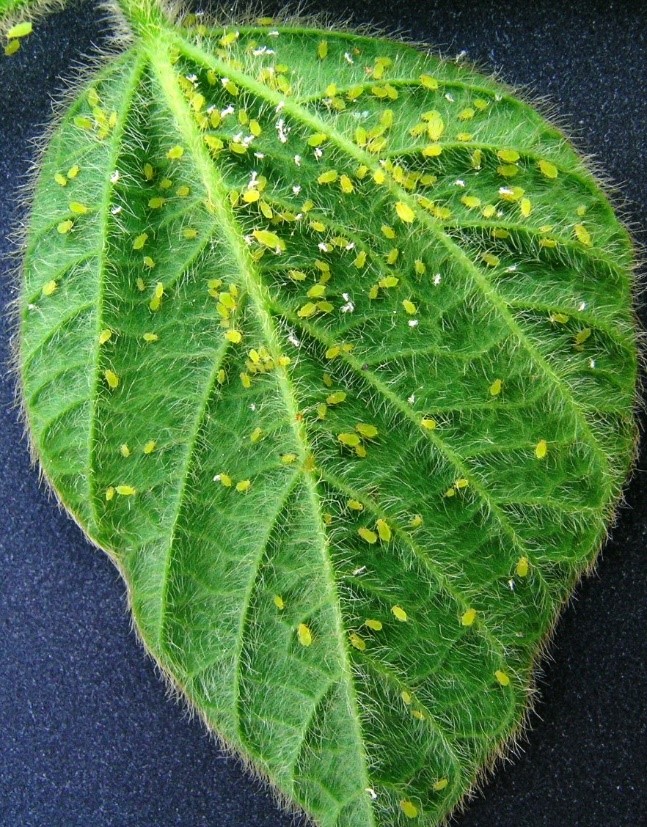
Appearance and monitoring tips for soybean aphids (Fig. 2):
• Small, light yellow, with black cornicles (tailpipes).
• Winged adults have black heads and thorax.
• A hand-lens may be helpful for verification.
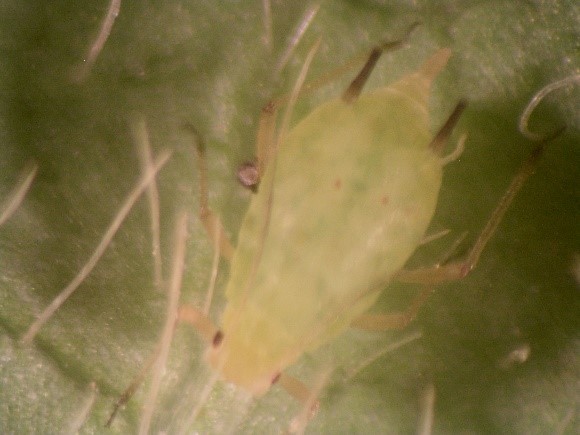
Sample weekly, even daily, after bloom. Check the undersides of leaves to look for aphids. Ants on plants may hint that aphids are present (some ant species like feeding on aphid honeydew). To avoid bias and inaccurate estimates of pest populations, RANDOMLY select soybean plants to assess then count and note soybean aphid densities.
If aphid levels are high, numbering in the hundreds, exact counts are not possible and likely impractical. Instead, practice visually estimating densities (Fig. 3). Photo keys are available to help. Don’t count the white shed cuticles you may see on plants with many aphids.
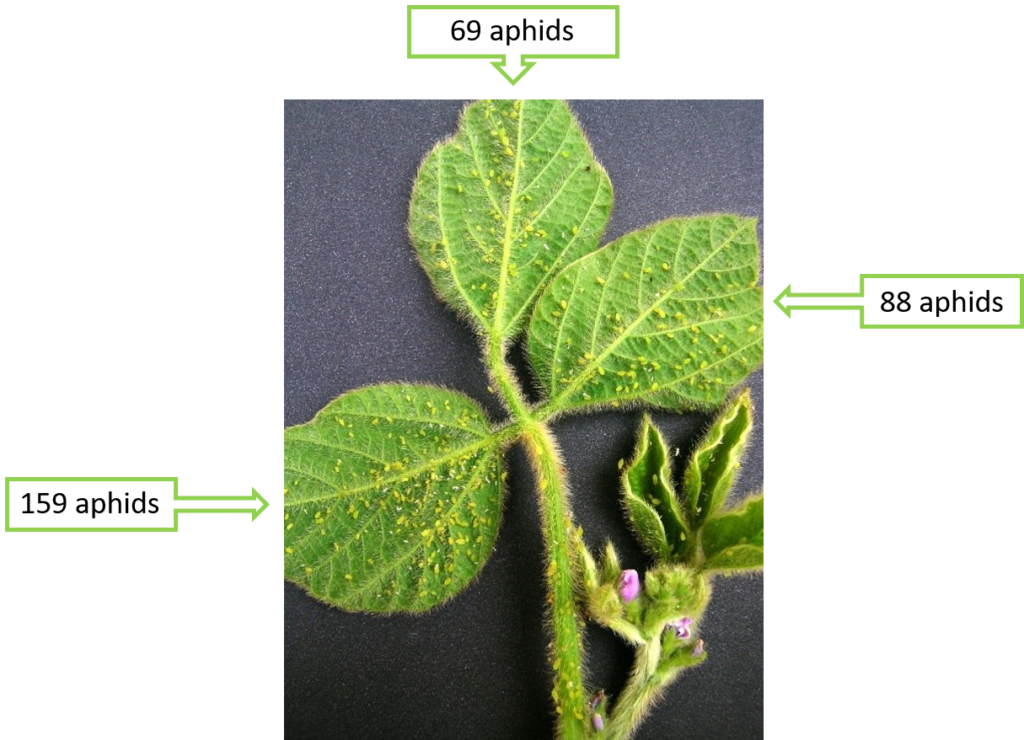
An app called Aphid Advisor, factors several natural enemies into the management decision and recommends looking for several natural enemies, such as lady beetles (Fig. 4), lacewings, hover fly larvae (Fig. 5), minute pirate bugs, parasitized aphids, etc. Information on Aphid Advisor is available at: http://www.aphidapp.com
The action threshold (density where action is recommended to mitigate damaging densities associated with economic loss) is an average of 250 aphids per plant applied from onset of bloom to early stages of seed development and typically involves rapidly increasing aphid populations. If using Aphid Advisor, a dynamic action threshold, which includes the impact of natural enemies, will be calculated.
If control of soybean aphids is necessary, selective insecticides that kill aphids but are harmless to their natural enemies are now available. See your provincial Guide to Crop Protection or contact your local provincial entomologist for more details.
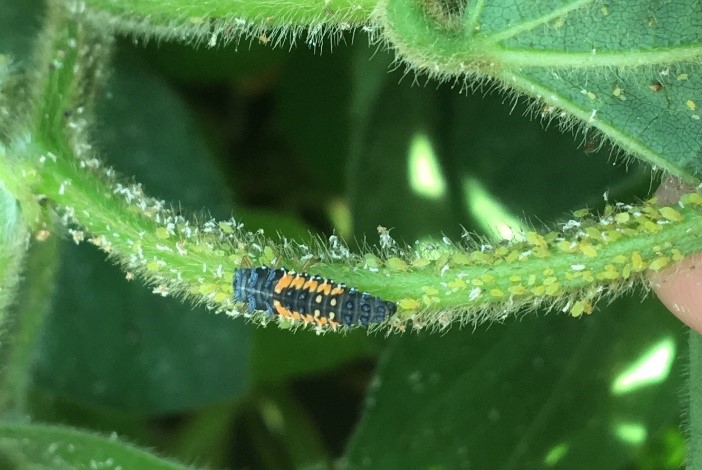
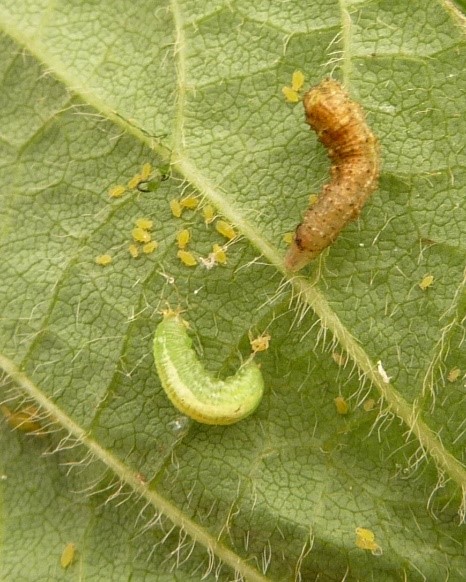
Additional information on soybean aphids can be found in the Field Crop and Forage Pests and their Natural Enemies in Western Canada: Identification and Management: AAFC-Field-Guide (2018) as both ENGLISH and FRENCH resources that are freely downloadable and searchable.
Did you know?
Pinkish, white, or tan and fuzzy soybean aphids are infected with a fungus! Fungal pathogens can reduce aphid numbers in warm and humid conditions.
References:
Ragsdale, D.W., B. P. McCornack, R. C. Venette, B. D. Potter, I. V. MacRae, E. W. Hodgson, M. E. O’Neal, K. D. Johnson, R. J. O’Neil, C. D. DiFonzo, T. E. Hunt, P. A. Glogoza, and E. M. Cullen. 2007. Economic Threshold for Soybean Aphid (Hemiptera: Aphididae). Journal of Economic Entomology. Vol. 100: 1258-1267. https://doi.org/10.1093/jee/100.4.1258
Hallett, R.H., C.A. Bahlai, Y. Xue and A.W. Schaafsma. 2014. Incorporating Natural Enemy Units into a Dynamic Action Threshold for the Soybean Aphid, Aphis glycines (Homoptera: Aphididae). Pest Management Science. Vol. 70: 879-888. https://doi.org/10.1002/ps.3674
